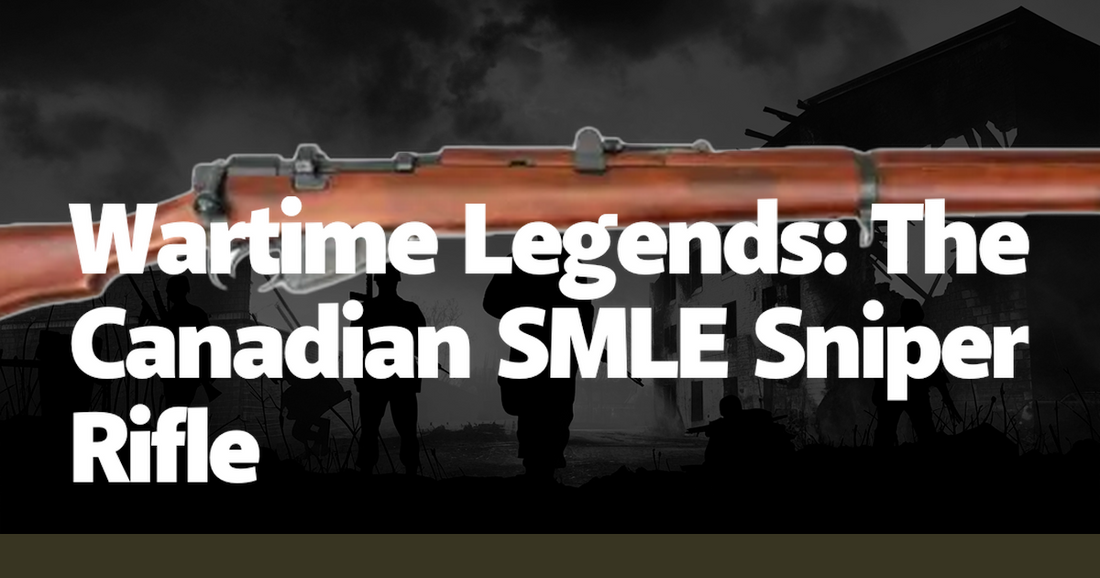The Canadian SMLE (Short Magazine Lee-Enfield) sniper rifle occupies a storied place in the annals of military history, a testament to the ingenuity and resilience of Canadian forces during wartime. This rifle, a variant of the British Lee-Enfield, was adopted and adapted by Canadian snipers who sought to maximize its effectiveness in the harsh and varied conditions of the battlefield. The SMLE was not just a weapon; it was a symbol of precision, endurance, and the indomitable spirit of the soldiers who wielded it. Its legacy is etched in the numerous successful missions and the personal stories of the snipers who relied on it to protect their comrades and achieve strategic victories.
One of the most compelling aspects of the SMLE sniper rifle was its adaptability. Canadian snipers modified the rifle to suit their specific needs, often enhancing its scope and adjusting its trigger mechanism for greater accuracy. The SMLE was renowned for its robustness and reliability, qualities that were indispensable in the unpredictable and often unforgiving conditions of wartime. Whether in the muddy trenches of World War I or the dense forests of World War II, the SMLE proved its worth time and again. Its bolt-action mechanism, combined with a ten-round magazine, provided a balance between rapid fire capability and precision, making it a versatile tool in the hands of a skilled marksman.
The effectiveness of the SMLE was not solely due to its mechanical attributes; it was also a product of the rigorous training and exceptional skill of Canadian snipers. These soldiers underwent extensive training, honing their marksmanship to a fine edge. The Canadian military placed a strong emphasis on sniper training, recognizing the critical role these soldiers played in reconnaissance and in taking out high-value targets. Anecdotes from veterans often highlight the intense focus and discipline required to master the SMLE, with many recalling the countless hours spent perfecting their aim and learning to read the terrain and weather conditions that could affect their shots.
One notable example of the SMLE's impact can be found in the story of Corporal Francis Pegahmagabow, an Ojibwe sniper and scout who served with the Canadian Expeditionary Force during World War I. Pegahmagabow is credited with over 300 confirmed kills, a testament to his extraordinary skill and the reliability of his SMLE rifle. His exploits became legendary, earning him multiple medals for bravery and making him one of the most decorated Indigenous soldiers in Canadian history. Pegahmagabow's story is a powerful illustration of how the SMLE, in the hands of a master sniper, could alter the course of engagements and save countless lives.
The SMLE's reputation was further solidified during World War II, where it was used extensively by Canadian forces in various theaters of war. In the dense, fog-shrouded forests of Europe, Canadian snipers employed the SMLE to devastating effect, often operating behind enemy lines to gather intelligence and eliminate key enemy personnel. The rifle's accuracy and reliability were crucial in these high-stakes missions, where a single shot could mean the difference between success and failure. Stories from this era often recount the tense, silent duels between Canadian snipers and their German counterparts, with the SMLE proving to be a formidable weapon in these deadly games of cat and mouse.
Beyond its battlefield performance, the SMLE also played a significant role in the camaraderie and morale of Canadian sniper units. The shared experience of mastering the rifle and relying on it in life-and-death situations forged strong bonds among these soldiers. Veterans often speak of the deep sense of trust and mutual respect that developed within sniper teams, with the SMLE serving as a common thread that connected them. This sense of unity was crucial in maintaining the effectiveness and cohesion of sniper units, particularly in the face of the immense physical and psychological challenges they encountered.
The legacy of the Canadian SMLE sniper rifle extends beyond its wartime service. It has become a symbol of Canadian military heritage, representing the ingenuity, skill, and resilience of the soldiers who used it. The rifle is a popular subject of study and admiration among military historians and firearms enthusiasts, who continue to explore its design, modifications, and the stories of the men who wielded it. Museums and collections across Canada and around the world preserve examples of the SMLE, ensuring that its history and the lessons it embodies are not forgotten.
In reflecting on the Canadian SMLE sniper rifle, one cannot help but be struck by the profound impact it had on the course of military history and the lives of those who used it. It was more than just a tool of war; it was a symbol of the enduring human qualities of precision, adaptability, and courage. The stories of the Canadian snipers who wielded the SMLE are a testament to the extraordinary feats that can be achieved when skill, technology, and determination converge. As we honor their legacy, we are reminded of the timeless lessons of perseverance and ingenuity that continue to resonate in the annals of military history.

